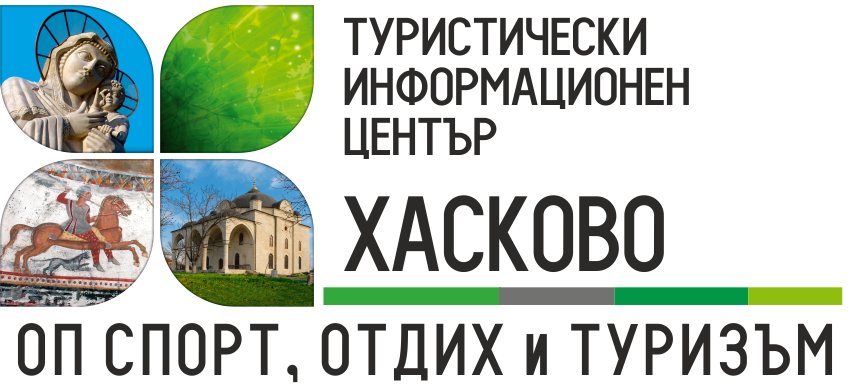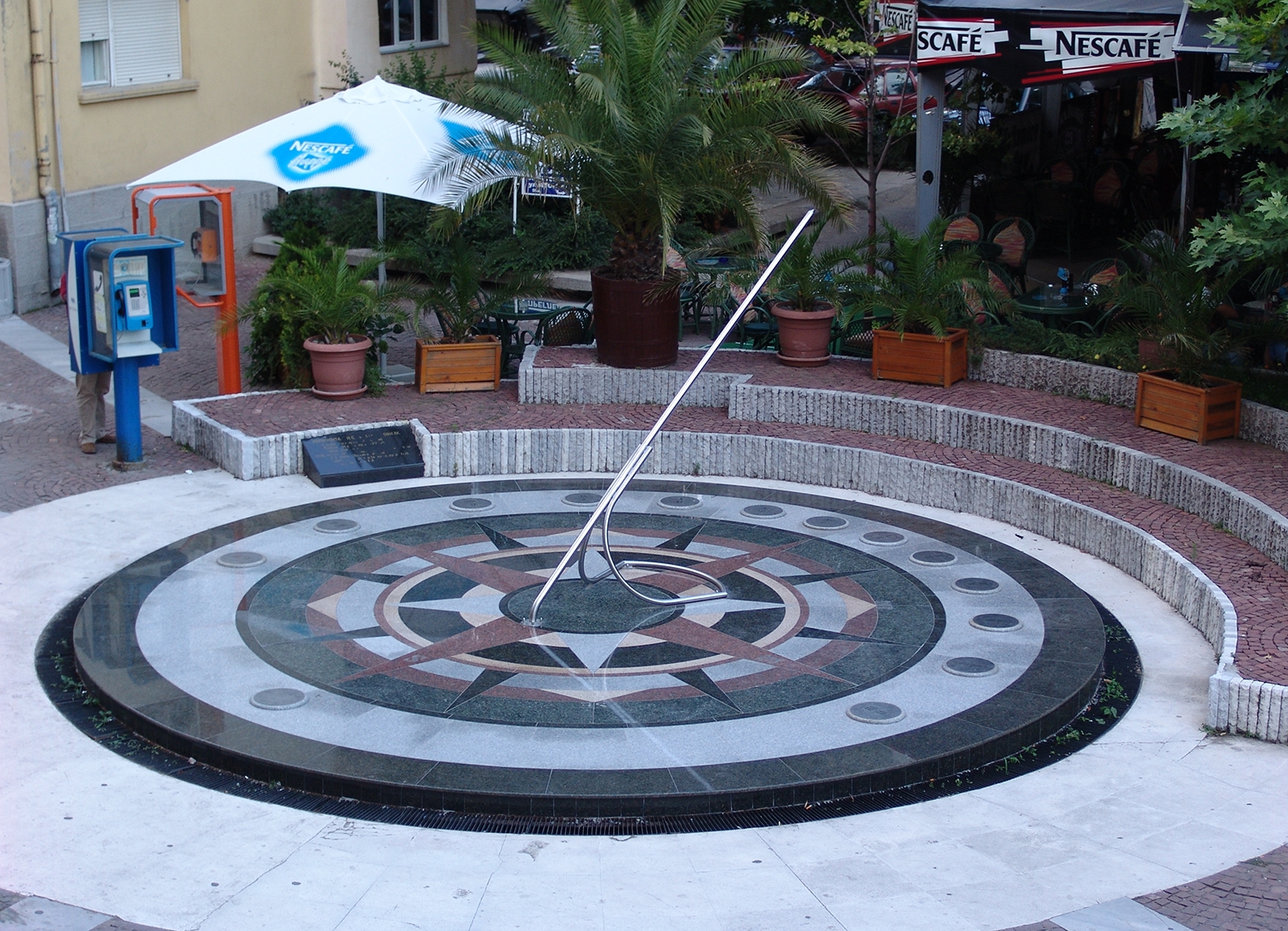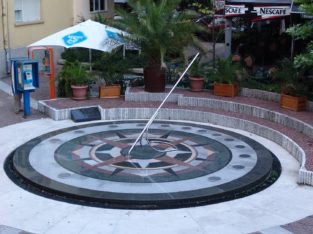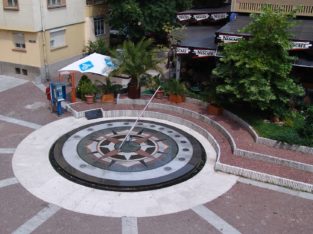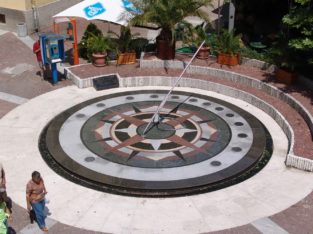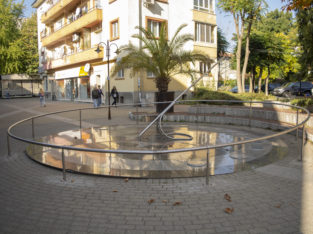The sundial in Haskovo
In ancient times, when people did not have clocks, calendars, and compasses, the sun was the basic indicator for time and space. Then the nations of Mesopotamia, India, Egypt and Ellada invented sundials. Though consisting of a vertical rod fixed in the ground or a ritual obelisk, they taught our ancestors to measure the time. Over the years, the sundial was becoming larger, more diverse, more beautiful, more sophisticated and increasingly complex…
Besides the time, the sundial in Haskovo also shows us the Compass Rose. For centuries, the symbol of the rose was connected with the cards and led people in the right direction. Painted on almost every map, The Compass Rose pointed north and south, east and west. Originally known as the Rose of the Winds, it showed the thirty-two winds blowing from the directions of the eight major winds, the eight semi-winds, and the sixteen quarter-winds. When written in a circle, these thirty-two compass points perfectly matched the thirty-two petals of the rose.
The sundials are the oldest known devices for measuring the time –“… the Sun works for them, and no one knows better than it”.
Useful information
Location
bul. San Stefano, Haskovo

